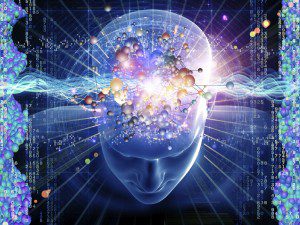12 October 2012
By Andrea Lazenby
Guest Writer for Wake Up World
Twenty five years ago a weird man named Gary Douglas channelled some information about touching points on the head and how that could change electrical brain function.
Ten years later, science discovered that the points he called, “joy” and “sadness” was correlated with the experience of those emotions.
Several doctors who are experts in biofeedback—one psychologist, one chiropractor—have reported changes in their brain wave function when receiving the bars (Access Consciousness). They reported changes from beta through alpha to theta, the relaxed state just short of sleep.
[pro_ad_display_adzone id=”110028″]
Now Newsweek magazine, in a cover story called “Money Brain,” tells us more about research into localisation of different functions in the brain.
In tune with the times, Newsweek applies this information about addiction generally to the American addiction to spending. The same information really applies to all aspects of addiction and choices of short-term versus long-term gain.
The areas of the brain that scientists are now localizing as connected to addiction are the ventral striatum, deep in the brain, and the medial pre-frontal cortex just behind the forehead. Using functional MRI machines, researchers tracked electrical brain activity when subjects were presented with a choice of receiving money now or in the future.
In people who are “spend-it-now, to-hell-with-tomorrow,” the electrical activity in these areas diminished when they were asked to postpone gratification. The more they were asked to wait, the more the electrical activity in their brains dropped. In other people, activity in the two areas was the same whether they were about to receive money now or in the future—suggesting they were equally happy either way.
Applying this information to what we know about the bars can show us some interesting information about what actually happens when we gift the bars are run.
Applying this information can expand what running the BARS are actually capable of doing and generating change in our brains, and therefore change patterns of behavior and ultimately our lives.
And what about that ventral striatum deep inside the brain? Is it stretching things to say that the bars can reach that spot also? Consider this—it’s just underneath the bar that is called ‘aging toaster’. The description of aging toaster in the bars book says it extends three inches into the brain. Some bars facilitators describe it as a “toaster” into which you could fit a soda cracker. Many people receiving the bars report a sensation like someone is actually sticking their fingers deep into their skulls—even if they can feel the person lightly touching the top of their head!
It’s not really that much more far fetched than science, either. While original experiments mapping the function of regions of the brain was done using needles, science is now doing studies about localizing brain function using the far less invasive transcranial (across the head) magnetic stimulation. If magnets can affect brain function,—and they do—then surely the electric nature of human touch affects it also. The reports of the bio feedback experts on the changes in their own brain waves suggest this is so.
And isn’t it interesting that the part of the brain affected by the ageing toaster controls our ability to make intelligent choices that actually create the future we say we would like? If we did more of this, would we age less? Does diminishing this function contribute to aging?
Are you interested in learning more? Are you interested in having your BARS run?
Go to accessconsciousness.com and search for a practitioner in your area, or you can contact me, Andrea Lazenby for further information via www.access-magic.co.uk
[pro_ad_display_adzone id=”110027″]







